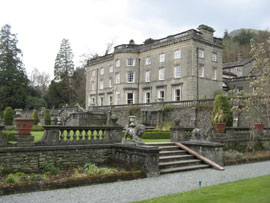Why is Rydal special?
Rydal village is a dispersed settlement between Grasmere and Ambleside with architectural and historic character. This includes:

- Dispersed historic settlement on the route between Grasmere and Ambleside.
- Picturesque location on the River Rothay where the valley narrows between Nab Scar and Loughrigg.
- Village and landscape setting that are largely a legacy of the eighteenth and nineteenth centuries.
- Development of village influenced by relict medieval deer park and later large listed house, Rydal Hall with its estate, seventeenth century Picturesque gardens and Edwardian formal gardens.
- Good examples of listed Lakeland vernacular farmhouses, cottages and barns including 15 grade listed buildings, including one grade I and four grade II*.
- Relict packhorse track, now a bridlepath linking village to Grasmere and Ambleside.
- Later turnpike route stimulated further development which now hugs the main road.
- Wooded river banks, bridges and lake margins that are an important component of the area’s scenic landscapes.
- Extensive areas of mixed woodland.
- A mix of stone and rendered historic buildings with a wealth of traditional local details.
- Significant survival of historic cobbled floorscape.
- Numerous good boundary walls of local boulder stones.
- Views and vistas that are celebrated in the poetry of Wordsworth and the paintings of Constable and Wright.
- Further Wordsworth heritage in the form of Rydal Mount, the poet’s home from 1813 to 1850, and its designated garden and Dora’s Field, planted with daffodils by Wordsworth, and the church where he worshipped.
- Network of public footpaths link the village to the surrounding countryside.
More details
